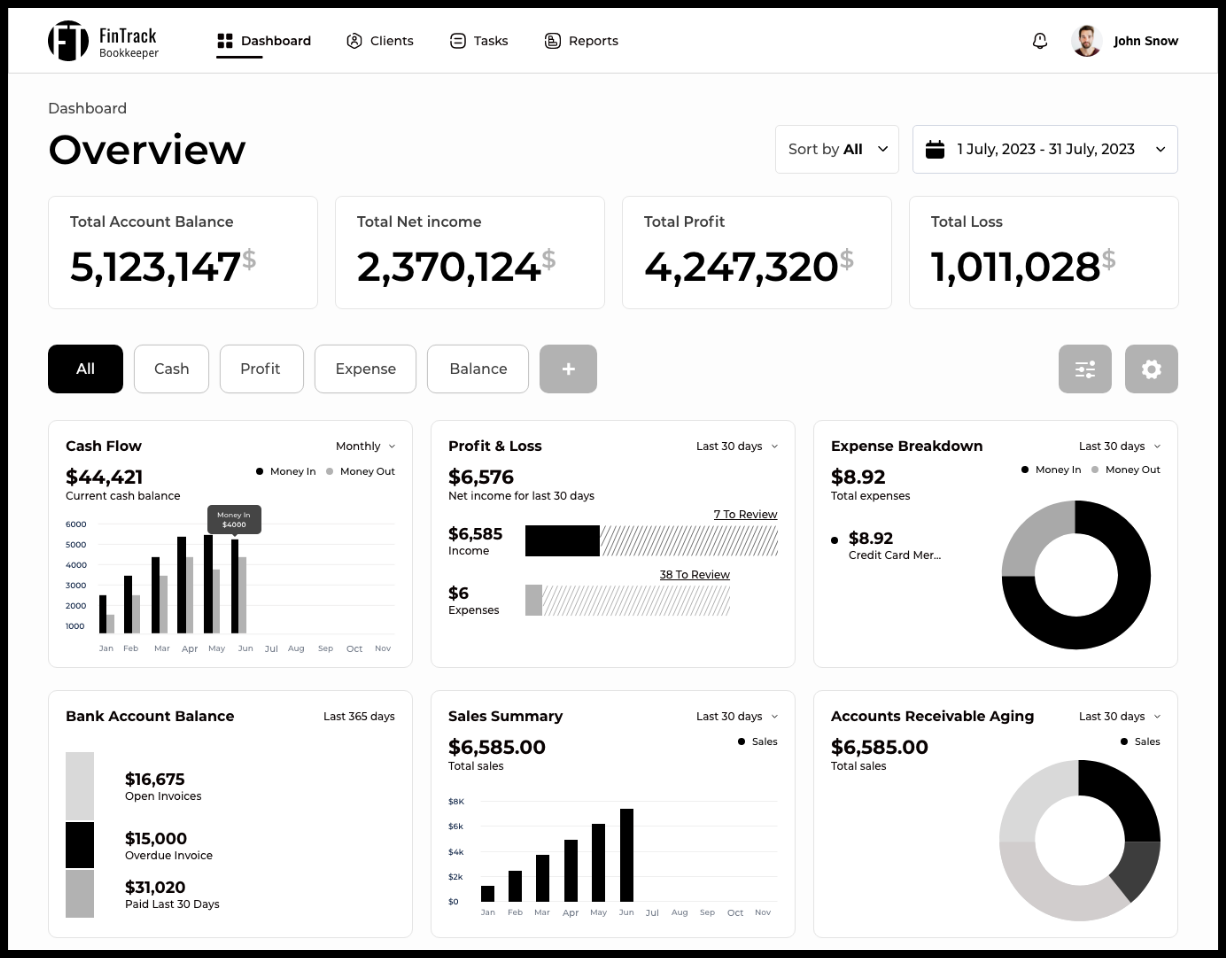Enterprise web application development is a different beast. In the page you’ll see all the steps of the process including cost, features, technologies and more.
A Complete Guide for Enterprise Web Application Development

What is an Enterprise Web Application?
Enterprise web application is a web application that deals on a much bigger scale, usually to bigger companies. These applications work on the web and will usually have complicated needs like various API integrations, big databases, process automations and big traffic.
These large scale complex needs will often come with big challenges like security, very good user experience including ease of use and fast loading time. A lot of enterprise web applications also afford customization options and many offer features for customer support in order for the company to be able to engage more easily with its community. Common types of web applications include CRMs, task management apps and accounting softwares.
The Process of Enterprise Web Application Development
While each enterprise web application project is unique and requires a tailored approach, there are several common stages that every development process typically goes through:
First Step – Understand Your Needs
- Deep Analysis of Requirements: This involves gathering detailed information about the organization’s needs, user demographics, and the specific problems the application aims to solve.
- Stakeholder Engagement: Involving various stakeholders, including end-users, in the initial planning stages to gather diverse perspectives and requirements.
- Market Research: Conducting thorough research to understand the market, including trends, user expectations, and competitor analysis.
- Technical Feasibility: Assessing the technical feasibility of the desired features, including integration capabilities with existing systems.
- Regulatory Compliance: Ensuring that the application adheres to relevant laws and regulations, especially concerning data privacy and security.
Second Step – UI/UX Architecture
- User-Centric Design: Focusing on creating a user-centric design that simplifies complex processes and enhances user engagement.
- Prototyping and Wireframing: Developing prototypes and wireframes to visualize the application layout and user flow.
- Responsive Design: Ensuring the application is responsive and accessible across various devices and platforms.
- Accessibility Standards: Incorporating accessibility standards to make the application usable for people with disabilities.
- Branding Consistency: Aligning the application’s design with the organization’s branding and visual identity.
Third Step – Coding and Development
- Technology Stack Selection: Choosing the appropriate technology stack (languages, frameworks, libraries) that best suits the application’s requirements.
- Microservices Architecture: Considering a microservices architecture for better scalability and easier maintenance.
- Code Quality and Standards: Ensuring high code quality and adherence to coding standards.
- Agile Development Process: Implementing an agile development methodology for better adaptability and incremental progress.
- Security Best Practices: Integrating security best practices right from the start of the development phase.
Final Step – Testing and Bug Fixing
- Automated Testing: Employing automated testing tools for continuous testing throughout the development process.
- Performance Testing: Conducting performance testing to ensure the application can handle expected and peak loads.
- User Acceptance Testing (UAT): Involving end-users in the testing phase to get feedback on usability and functionality.
- Security Audits: Performing security audits and vulnerability assessments.
- Documentation: Creating comprehensive documentation for future reference and maintenance.
Don’t Forget About Maintenance
- Regular Updates: Scheduling regular updates for performance improvement and new features.
- Monitoring and Analytics: Implementing monitoring tools to track the application’s performance and user engagement.
- User Feedback Loop: Establishing a mechanism to gather and incorporate user feedback for continuous improvement.
- Support Services: Providing robust customer support to address any issues or queries.
Key Features in Enterprise Web Applications
In developing these applications, a range of advanced technologies are used. This includes programming languages, database management systems, and tools for handling big data, ensuring security, and facilitating smooth user interactions. The choice of technology depends on the application’s specific needs and goals.
Enterprise web application development employs a wide range of technologies, including:
- Programming Languages: Such as Java, Python, Ruby, and JavaScript.
- Frameworks: Angular, React, and Vue.js for front-end development, and Django, Ruby on Rails, and Node.js for back-end development.
- Databases: SQL and NoSQL databases like MySQL, PostgreSQL, MongoDB, and Cassandra.
- Cloud Services: AWS, Azure, Google Cloud, and others for hosting and scalability.
- Security Measures: Encryption, authentication, and access control mechanisms.
Cost and Timeframe for Enterprise Web Application Development
How much Does it Cost to Develop a Web Application?
The cost of developing a web application varies widely depending on various factors such as the complexity of the app, the technology stack used, the geographical location of the developers, and the specific requirements of the project. Here’s an elaborate breakdown:
- Complexity of the Application
Simple Web Applications: These may include basic functionalities, simple UI designs, and minimal custom coding. Development costs could range from $5,000 to $20,000.
Medium Complexity Applications: These include more advanced features like custom UI/UX designs, API integrations, and moderate database work. Costs might range from $20,000 to $50,000.
Complex Applications: These are high-end applications with extensive custom development, complex functionalities, third-party service integrations, and advanced security measures. Development costs can exceed $50,000, often reaching $100,000 or more. - Technology Stack
Front-End Technologies: Technologies like React, Angular, or Vue.js may have different costs based on the expertise required.
Back-End Technologies: Using Node.js, Ruby on Rails, or Python frameworks like Django could affect the cost depending on the complexity of back-end operations.
Database: SQL or NoSQL databases, and their scalability requirements can influence the cost.
Additional Technologies: Cloud services, third-party APIs, and other integrations can add to the cost. - Geographic Location of Developers
North America/Europe: Developers in these regions typically charge higher rates, ranging from $50 to $250 per hour.
Eastern Europe: Developers may charge between $30 to $150 per hour.
Asia and Other Regions: Rates can be lower, ranging from $20 to $100 per hour. - Design and User Experience
UI/UX Design: Custom design work increases the cost. A complex interface with high-end graphics and user experience design can add significantly to the budget. - Development Approach
Custom Development: Fully custom web applications are the most expensive due to the amount of work involved.
Using Frameworks and Templates: Leveraging existing frameworks and templates can reduce costs but might limit customization. - Additional Cost Factors
Project Management: Management and coordination of the development process add to the overall cost.
Quality Assurance: Testing the application for bugs, performance issues, and usability can increase the budget but is crucial for a successful app.
Maintenance and Updates: Ongoing maintenance, updates, and potential scaling also factor into long-term costs. - Timeframe
Faster Delivery: Projects with tight deadlines may require more resources working simultaneously, leading to higher costs. - Post-Launch Expenses
Hosting: Ongoing hosting costs vary depending on the chosen platform and traffic volume.
Support and Maintenance: Regular updates, bug fixes, and customer support are ongoing expenses.
Marketing: The cost of promoting the web application should also be considered.
Estimated Cost Breakdown
Conclusion
It’s important to note that these are approximate ranges, and actual costs can vary significantly based on individual project requirements. Most importantly, investing in thorough planning, skilled developers, and quality assurance can significantly contribute to the success of the web application, which is often worth the additional cost.
Examples of Enterprise Web Applications
Examples of successful enterprise web applications include Salesforce for CRM, Asana for task management, and QuickBooks for accounting.

Choosing an Enterprise Web Application Development Company
Cultural Fit: Assessing the cultural fit between the organization and the development company for a smooth collaboration.
Post-Deployment Support: Post-deployment support and maintenance are critical aspects of enterprise web application development, ensuring that the application remains efficient, secure, and relevant after its initial launch. This phase involves regular monitoring for performance issues, applying security patches to safeguard against new vulnerabilities, and updating the application to meet evolving user needs and technological advancements. Effective post-deployment support also encompasses handling user feedback and bug reports, which are integral for continuous improvement of the application. This ongoing process helps in maintaining a high level of user satisfaction and engagement. By investing in these services, organizations can ensure the longevity and success of their web application, keeping it aligned with business goals and user expectations. This commitment to ongoing maintenance and support is a testament to the dynamic and iterative nature of web application development, emphasizing the importance of adaptability and responsiveness in today’s fast-paced digital landscape.












